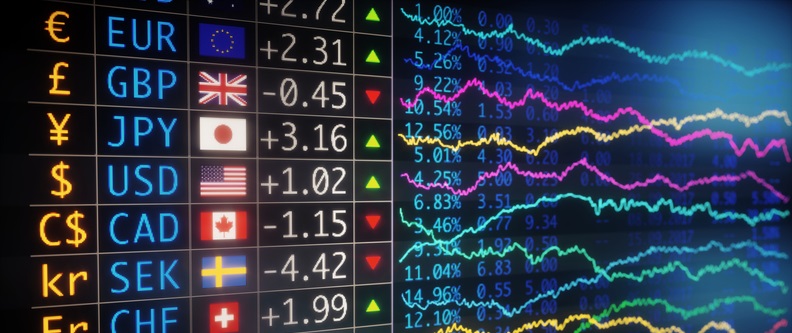As the US dollar index fell from the March 2020 high of 102.992, the decline created a buying opportunity for the commodity currencies against the greenback. However, the world was at a low point of industrial and commercial economic output. A coronavirus market crash and the draconian measures thereafter deployed by the world’s governments brought the world of manufacturing and commerce to a standstill. So, was the rise in the commodity currency pairs real? where if any was the demand for the commodities?
2020 is set to close with an unprecedented number of US dollars being created through stimulus and relief bills. A further $900bln has been agreed upon this last weekend, which is on top of the previous trillions of fiscal and monetary policy aides created after the coronavirus crash. We now see countries administering the vaccines that were researched, designed, and created within the last 9 months. With every good news story and stimulus package, expectations become higher for the world’s economies to pick up and the real need for commodities to trend higher through 2021.
The USA is the largest economy in the world, and it is set to reach $24.9 trillion by 2023, with China coming in a very close second. China was the epicentre for the outbreak of COVID-19, the first country to lock down and the first to get back to modest economic growth. China is the factory of the world and the focus of President Trumps trade war.
Economic indicators out of the US show that the fallout from the coronavirus pandemic is still ongoing, with payrolls only retracing about 55% of the decline. Since the record Q3 rebound this year, the US economy has lost momentum, with the V-shape recovery predicted by President Trump here, but only for equities and risk assets; the wider economy is faltering. Business investment troughed in Q3 and Private Consumption is currently deflationary. Housing has been supportive of the economy but mainly due to itself being supported by record-low mortgage rates and high-demand.
The US Fiscal policy in 2021 relies on the agreement between President Biden and both houses of Congress, something that President Trump had in his favour. The direction of US Regulation, Foreign and Trade policies are determined largely by the president alone. The last 4 years under the Trump administration had seen record amounts of fiscal flows from the US treasury and a widening of the deficit. 35% of all US dollars in existence were created in 2020 and the $20 trillion can be tracked through the M2 Money Stock. The downtrend in the US dollar due to the expanding deficit and widening trade deficit was slowed only by the bond purchases through the Fed monetary policy and the decrease in Fed Funds Rate towards zero. Looking at a trade-weighted US dollar chart, it shows an incline from May 2018 and a steep decline from the COVID-19 March 2020 peak.
US inflation is subdued, the unemployment rate is still elevated and when reading the Federal Reserve’s latest Summary of Economic Projections, none of the criteria the Fed has set to raise interest rates, will have materialised by 2023. Based on this info, it is hard to see how long-term the US dollar decline reverses. Unless of course there is a 180º turn in the Biden administration’s policy towards Deficits and Trade but a continuation of low-interest rate policies and fiscal expenditure to the magnitude seen over the last 4 years.
If China’s leadership plans to set its real economic growth target at about 8% for 2021 were to come to fruition, that would be a Chinese GDP % not seen since approximately 2010. As China’s GDP growth rose from 2000 to 2009 the Australian economy and AUD saw massive gains, as they did in the aftermath of the Great Financial Crash.
Since the March 2020 low, the AUDUSD has seen a steady monthly appreciation in Australian dollars strength which is correlated to the fall in the US dollars value and the uptick in factory activity in China. If China ramps up their economic activity further and goes any way towards reaching their 8% GDP target, I fully expect the AUDUSD and NZDUSD currency pairs to reach levels last seen in 2010 and appreciate by at least a further 30%.


Today the PBOC announced a modest rise in the mid-point for the USD/CNH pair, up from 6.5315 to 6.5507. In itself, not a big move, but the rhetoric out of China’s leadership and the central bank is one of growth. They are also keen to slow the appreciation of Yuan against the US dollar as inflation measured through the % change of CPI index is currently negative, something not seen since 2010. The fall in the US dollar correlates to the decline in Chinese CPI. Why would CPI going negative be a problem? The Chinese economy is very heavily indebted and for people not to default on their debt, they need prices and wages to rise. Otherwise, China could be facing an insolvency event in the near future. This is why it is very possible that the PBOC will start accumulating US dollars to defend against the decline of the US dollar v’s Yuan.


As we saw this morning, a rise in the US dollar combined with a risk-off market appetite is bearish for the WTI/Brent crude assets. The Oil complex had one of the most bizarre stories this year as coupled with near-zero demand for the commodity the Saudi’s decided to pump at record levels following a breakdown in talks between OPEC+ countries. The end of April 2020 even had Oil derivatives trading in the negative numbers. Since then, the monthly chart for WTI is following the other commodity pairs higher with a couple of consolidation months at the end of the fiscal year and a stronger rise this last couple of months.
If the coronavirus vaccine rollouts put the world’s economies back on track, the demand for oil should also come back. This will be great news for the Canadian dollar and the Mexican Peso, whose host countries are oil exporters and sensitive to the price of the commodity.




The downside to the carbon economy comes from the call to action from the World Economic Forum, which has started the process for a New Green Deal and a Great Reset to the way we used to do business pre-coronavirus. The UK government has also announced that by 2030 no new Petrol or Diesel cars will be sold in the UK and along the streets of England, electric charging points are being installed. In today’s statement from out of the US Senate, Speaker Nancy Pelosi stated that the Democrats have put in place within the $900bln relief bill, money for Green policies. The demand for Oil could be suppressed from here on in. For prices to rise, the supply from OPEC+ would need to be reduced dramatically as would the supply out of American oil fields.
My base case scenario is for the US dollar to decline further but at a modest rate. This combined with the rise in Chinese productivity will give the AUD, NZD, CAD and MXN pairs a bullish theme and any pullback should be bought into for now. The premise comes undone, when the US Treasuries start rising at a great rate of change and/or the lack of US dollars in the system to buy safe-haven assets becomes a problem should there be some insolvency event in the USA. This event would see the US dollar rise rapidly and would undo a lot of the gains seen in the AUDUSD, NZDUSD etc. Coronavirus has devastated large portions of the world, but the USA is suffering deeply and is looking likely to get worse before it gets better, so more fiscal spending and a widening Trade deficit should keep the US dollar at lower levels.




